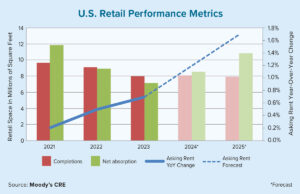Competition is stiff in today’s commercial real estate market as mortgage lenders compete for deals. According to the Mortgage Bankers Association, commercial and multifamily mortgage borrowing and lending is expected to break $1 trillion for the first time in 2022, a 13% increase above the estimated volume of $900 billion in 2021. Multifamily lending alone is forecast to rise to a record $493 billion in 2022.
Inflation and supply chain issues, as well as the ongoing war in Ukraine, are affecting capital markets in the U.S. As a result, the Federal Reserve is raising interest rates and lenders are starting to pull back. There is urgency behind the demand as well, as the reality of rising interest rates is incentivizing borrowers to act quickly. It may be surprising to hear that borrowers don’t necessarily need mortgage bankers or brokers to find capital. But here’s another truth: Not all capital stacks are created equal.
The cost of capital for any given deal can vary greatly and the wrong terms could cost borrowers significantly, either from the start or further down the road. Every capital provider offers different terms, looks for different types of loans and requires different types of due diligence. Not knowing what options are available in the market can cost borrowers hundreds of thousands of dollars on every deal. Let’s take a look at the elevated complexity of today’s market, which makes the role of the commercial mortgage finance advisor more important than ever.
Old-line alternatives
While all the “old-line” lenders, including commercial banks and insurance companies, are still active and competitive, there are hundreds of other sources for commercial and multifamily financing. For example, there are now more than 250 debt funds that are funding commercial mortgages, and every lender has its own underwriting and pricing models.
Not knowing what options are available in the market can cost borrowers hundreds of thousands of dollars on every deal.
Agency lenders Fannie Mae, Freddie Mac and the U.S. Department of Housing and Urban Development offer attractive rates, which make them favored funding sources for multifamily housing. But banks, commercial mortgage-backed securities (CMBS) lenders, insurance companies, credit unions and private investors all want a piece of the multifamily business to balance out their portfolios. There are important differences between these lending sources to understand.
The COVID-19 pandemic justifiably renewed concerns about the fragility of the CMBS market as it faced a huge and sudden challenge with the complete curtailment of commercial office utilization.
Today, however, CMBS lending is making a comeback, especially in locations with strong demand drivers for high-quality properties. While a borrower can secure a long-term, non-recourse CMBS loan before interest rates rise, they also should know that CMBS lenders typically expect wider interest rate spreads and have more restrictive terms than other lending sources.
Credit union resurgence
Credit unions have been wading into the commercial real estate lending pool much more frequently since 2017 when revised regulations made them a more desirable and viable source of capital for their members. The regulatory changes raised the limits on loan sizes to individual borrowers and relaxed the rules for collateral requirements for business-purpose borrowers.
In many cases, the requirement of a personal guarantee has been eliminated, while limits on construction and development loans also have been lifted. These nonprofit lending institutions fundamentally operate to serve their members by providing attractive yields on depository accounts, and by offering lower interest rates on auto loans, home loans and, yes, even commercial loans.
These changes have supercharged commercial lending activities for credit unions. According to the National Credit Union Administration (NCUA), commercial lending across these institutions rose sharply from $61.7 billion in third-quarter 2017 to $91.3 billion in third-quarter 2020. And this
growth continued in Q4 2021 as credit unions doled out $111.7 billion in commercial loans. That was good for a one-year increase of $17.3 billion, or 18.4%, according to the NCUA.
Additional options
The U.S. Small Business Administration (SBA) 504 loan program was created as an economic development tool aimed at promoting job growth. It has become an active funding source for owner-occupied buildings, and it is currently funding many types of commercial real estate, including hotels and self-storage properties, across the country.
The 504 loan can be used to finance the purchase of land or existing buildings, make improvements to existing facilities, obtain equipment or complete a ground-up construction project. The SBA 7(a) loan, meanwhile, is another type of government-backed commercial loan that can be used for real estate, working capital or equipment. The agency now allows borrowers to refinance existing SBA loans.
Private lenders have been extremely active in many states, taking funds from wealthy individuals and making private business-purpose loans. These capital sources expect healthy cash returns from their investments. The primary benefits of a private lender versus a bank are fewer regulations and red tape, which translates to faster movement, certainty of a quick closing and a flexible loan structure.
Commercial hard money lenders tend to be individuals or smaller companies. Their lending decisions are based on the stabilized real estate values and have less reliance on a borrower’s financial details. Hard money lenders are fueling deals that don’t meet bank underwriting requirements, such as short-term bridge loans, nonrecourse construction loans, and mezzanine and preferred equity funds for construction and acquisition projects. Terms, rates and fees for hard money loans, however, are typically not as attractive as a bank loan.
Winners and losers
As we move further into 2022 and emerge from the pandemic, we are realizing that the global health crisis mercilessly crushed some markets and product types while helping others. Astonishing shifts have occurred in how we consume goods, how and where we work, and where we want to live. Such changes, in turn, have affected the desirability of commercial real estate investments around the country.
The Sun Belt states have emerged among the strongest markets as people have migrated there in droves. Hospitality is suffering in northern states with many properties currently in distress and going into foreclosure, but Florida hotels are thriving. Office markets are facing a great unknown as many companies are attempting to lure workers back in while others are telling their workers to stay home indefinitely.
The manufactured-housing sector also is experiencing major growth, according to research from Green Street Advisors. The company’s commercial property price index, which captures the prices at which commercial real estate transactions are being negotiated and contracted, shows that manufactured housing has performed better than any other real estate asset class over the past seven years. Mobile-home parks and manufactured-housing communities — which have distinct regulatory definitions — were performing well for commercial real estate investors before the COVID-19 pandemic, and this has not changed.
● ● ●
Despite good news on the pandemic front, this is still a period of great uncertainty, with recent interest rate hikes, the geopolitical situation and a complicated lending landscape to navigate. It is critically important for commercial mortgage brokers to educate their borrowers and help them evaluate the myriad lending choices. ●
-
Ben Kadish is the president and founder of Maverick Commercial Mortgage Inc. and is a mortgage banking professional with more than 37 years of experience. Kadish’s primary focus is funding commercial mortgages ranging from $1 million to $40 million for income-producing properties.
View all posts






